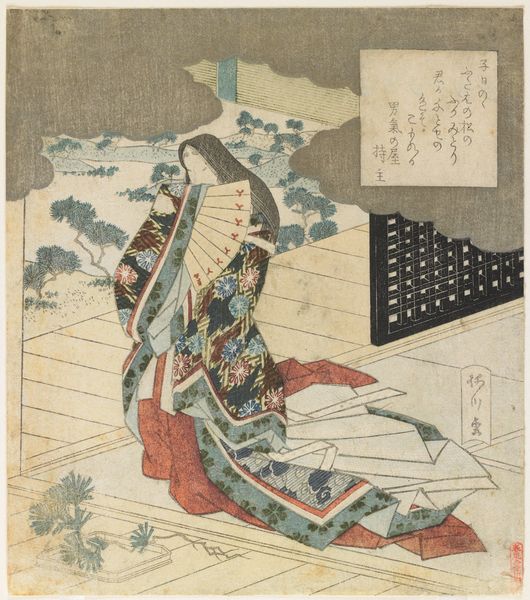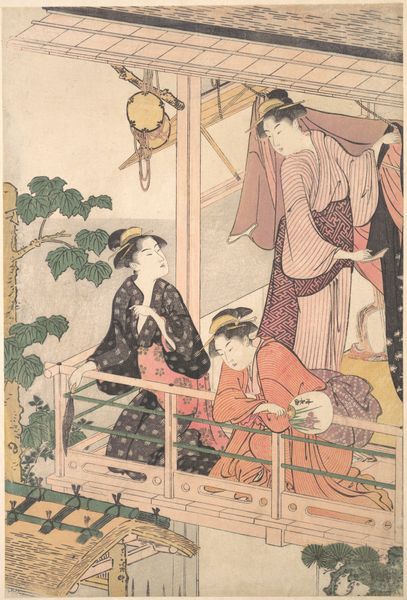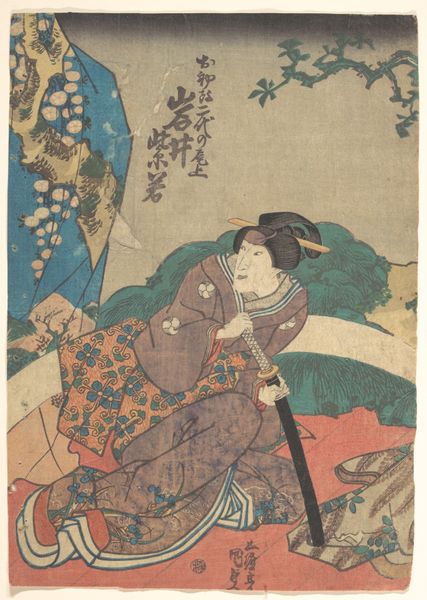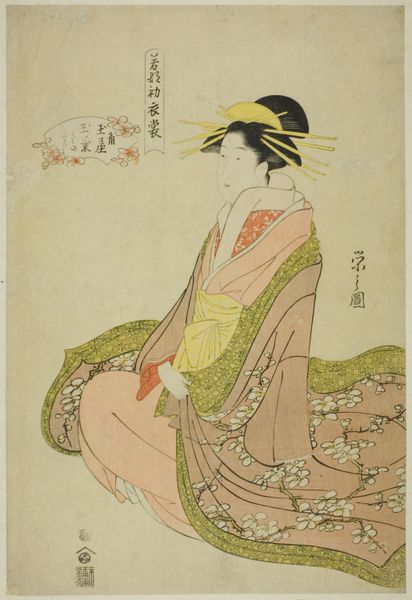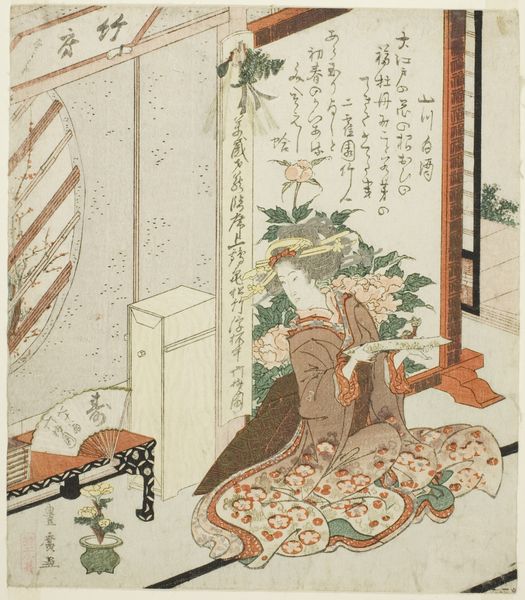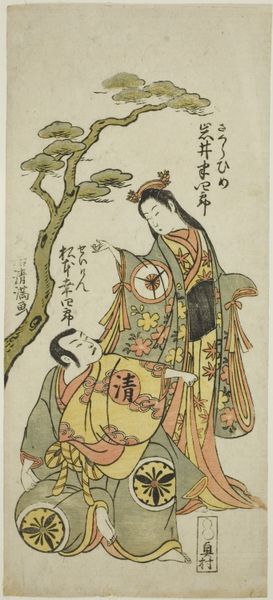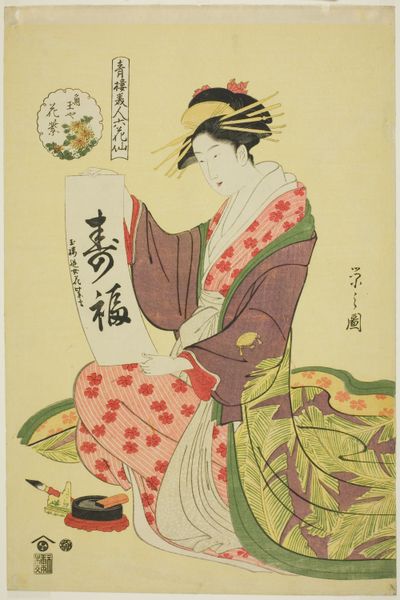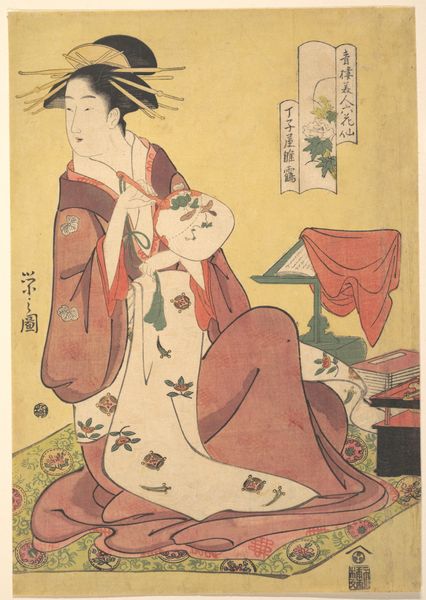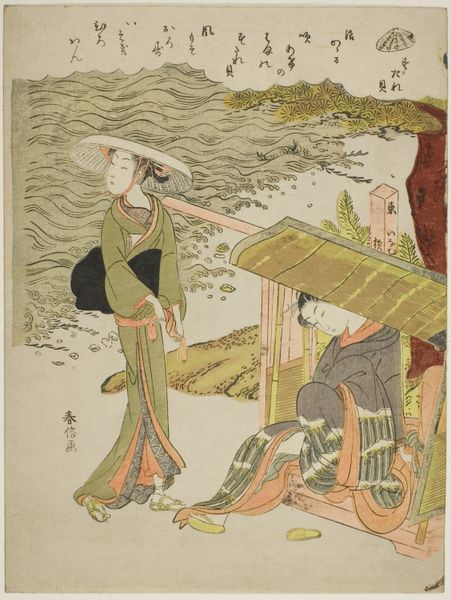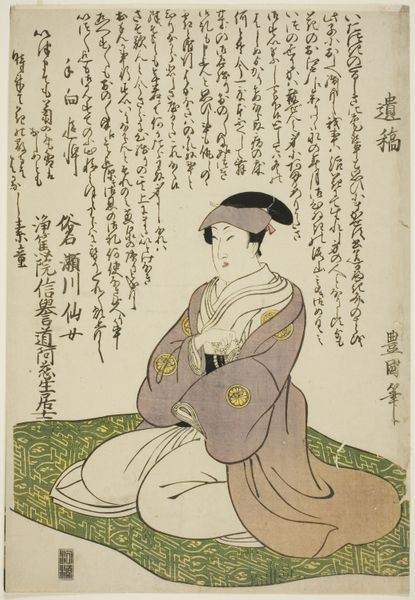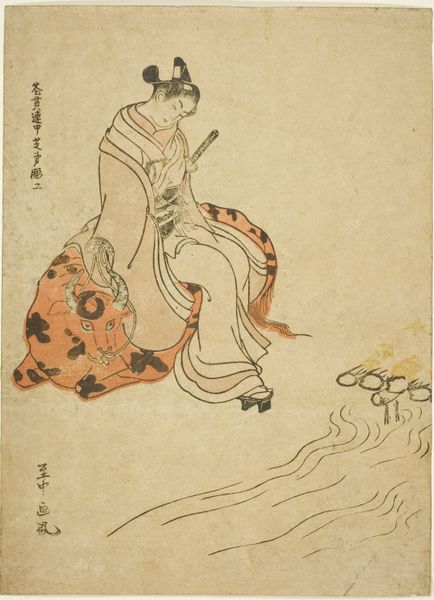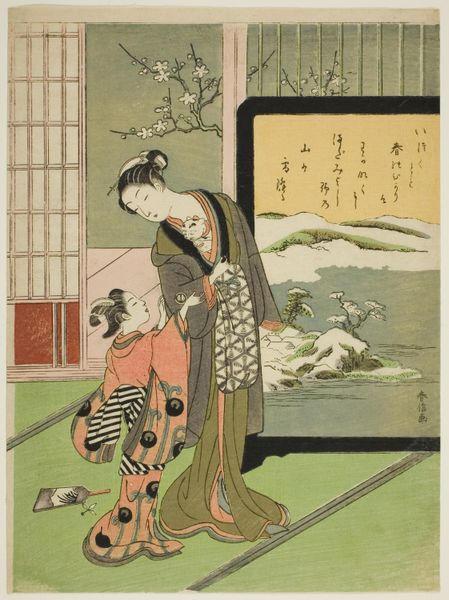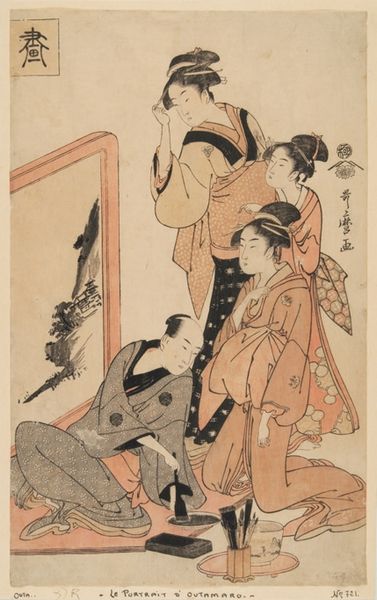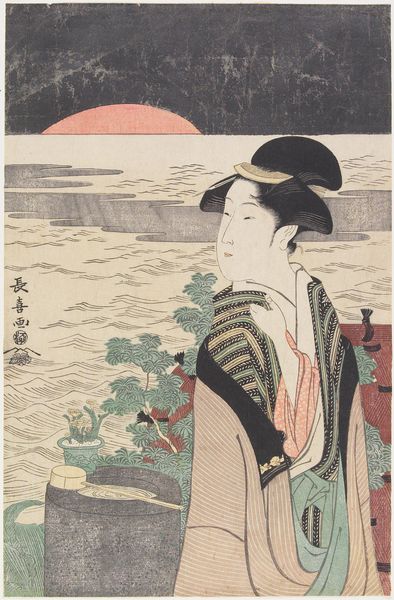
#
landscape illustration sketch
#
toned paper
#
water colours
#
ink painting
# print
#
asian-art
#
japan
#
handmade artwork painting
#
fluid art
#
coffee painting
#
watercolour bleed
#
watercolour illustration
#
watercolor
Dimensions: 37.5 × 26.1 cm (14 3/4 × 10 1/4 in.)
Copyright: Public Domain
Editor: Here we have Utagawa Toyokuni I’s "Portrait of Eijudo at Seventy-One," a print from 1798, now at the Art Institute of Chicago. I’m immediately struck by the blend of domesticity and grand landscape. What strikes you when you look at this? Curator: The figure's position, hunched over a book but surrounded by symbols of power and longevity, immediately suggests a tension. What does it mean for Eijudo to be depicted in this way, straddling private contemplation and public persona? Editor: That's interesting, I hadn't considered that. Is the setting symbolic, not just decorative? Curator: Absolutely. Consider the carefully placed Mount Fuji, a powerful symbol, alongside the hawk and the persimmon tree. These aren’t mere backdrop; they are coded indicators of status, aspirations, and even a connection to nature's cycles of renewal. What does it mean to depict a seventy-one-year-old man amidst these symbols of longevity? Editor: So, it's not just about portraying an individual, but situating him within a complex cultural web? Curator: Precisely. This print becomes a site where identity, age, and social standing are negotiated. Look closely at the lines of the face—are they meant to convey wisdom, weariness, or perhaps both? The choice to represent him at this age is also a potent statement about visibility and aging. How does seeing him framed this way challenge or reinforce existing social structures around aging? Editor: I see it now. It really complicates a seemingly straightforward portrait! Curator: Yes! It becomes a powerful commentary on the construction of identity within a particular social and historical moment. What I’m taking away is how every detail pushes us to reconsider our assumptions. Editor: That’s a great point. Thanks to your perspective, I’ll never look at portraits the same way again.
Comments
No comments
Be the first to comment and join the conversation on the ultimate creative platform.
